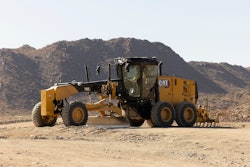It was a situation soaked in irony.
The awning was in place, microphones banked in front of the podium, but one official slated to give remarks – Alameda County Supervisor Scott Haggerty – didn’t make the 2 p.m. press conference, called to give the media an update on the I-580 improvements in his California county.
He was stuck in traffic.
“There’s no reason any taxpaying citizen should have to go through this traffic,” a frustrated Haggerty said afterwards in the Contra Costa Times.
It seems the great disconnect between gridlock and public transportation planning is finally gaining attention. Last year, when the U.S. Department of Transportation released its report, “National Strategy to Reduce Congestion on America’s Transportation Network,” then transportation secretary Norman Mineta, declared, “Congestion is not a fact of life. It is not a scientific mystery, nor is it an uncontrollable force. Congestion results from poor policy choices and a failure to separate solutions that are effective from those that are not.”
The authors of the just-released book, “The Road More Traveled,” would agree. Ted Balaker and Sam Staley take the oft-heard “you can’t build your way out of congestion” argument and counter with a firm “sez who?” In fact, say Balaker and Staley, building additional capacity is key to any logical congestion-reduction plan – plans that should also include that darling of metropolitan planning organizations, mass transit.
MPOs, say the authors, have actually contributed to congestion because many of them try to get Americans to behave the way they think they should behave: turn their back on soulless suburbs, congregate in high rises and create population densities best served by rail or bus. Congestion, to this prevalent way of thinking, is good, because it discourages using cars.
But congestion discourages too many other things. It discourages on-time parts deliveries to your jobsite when the truck is stuck in traffic. It discourages a potential employee from taking a job with your company because it would require an hour-and-a-half commute – even though the applicant only lives 20 minutes away. It even affects your social life: who wants to go to a concert or even meet friends when you have to endure two hours of stop-and-go to get there?
Let’s stop the wishful anti-car thinking, say these authors, and deal with congestion head-on. Their recipe includes three cups of construction (to the tune of $750 billion dollars over the next 25 years), the use of innovative private-public partnerships (they point to France – yes, France – as a leader in this area), mass transit where it makes sense, and generous dashes of congestion-reducing technology we already know works, including boothless, variable-pay toll roads. The two propose no national solution, but rather a mixture of proven strategies that can be matched with the specific needs of an area.
“When you get stuck in traffic,” say Balaker and Staley, “you can invent all sorts of new curse words and scream them as loudly as you like. What you cannot do is demand to speak with the manager. It’s one of the few places where we’re almost powerless against bad service.”
As Balaker and Staley point out, mobility is good, mobility equals profitability, and it’s time to handle our congestion problems with creativity instead of passivity.






